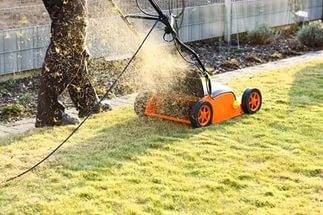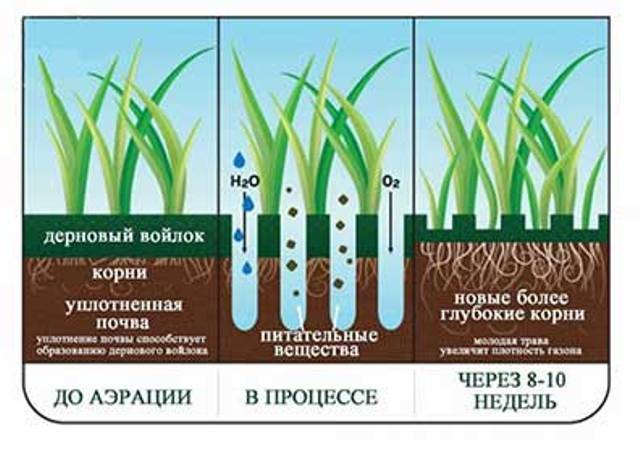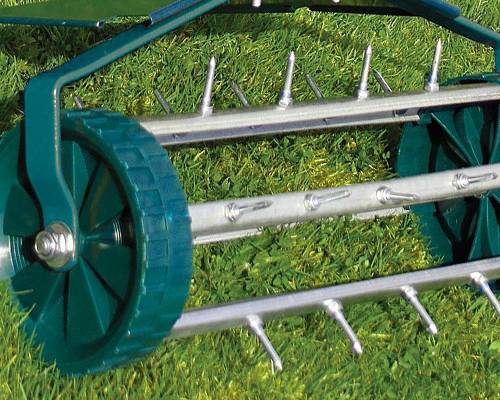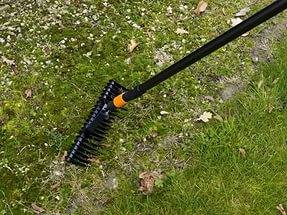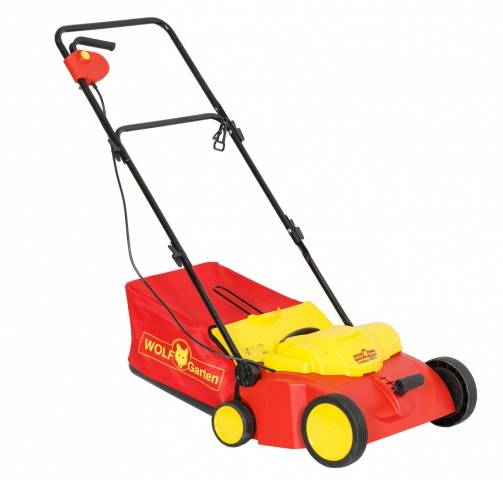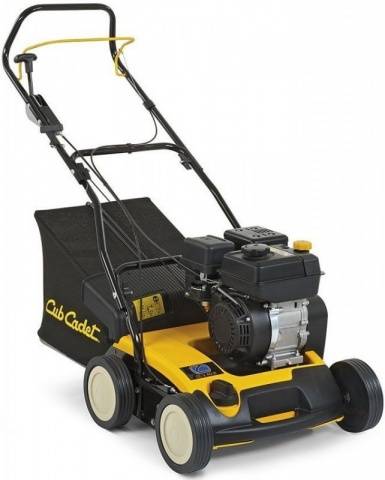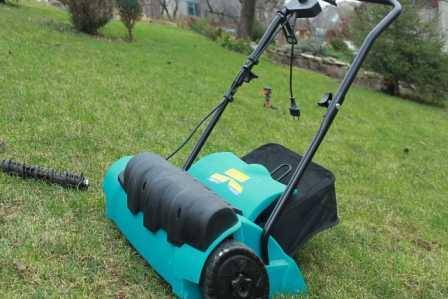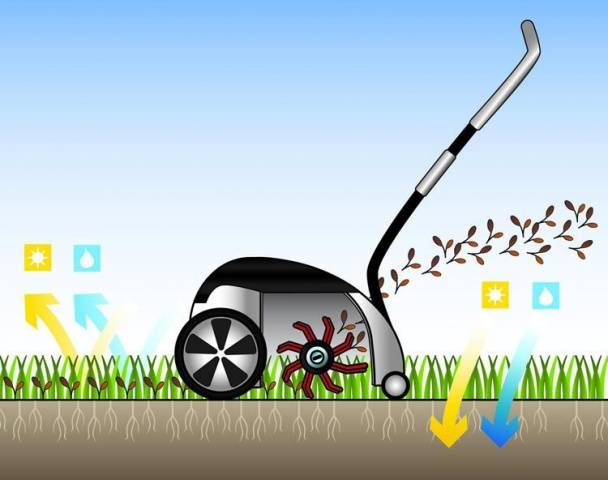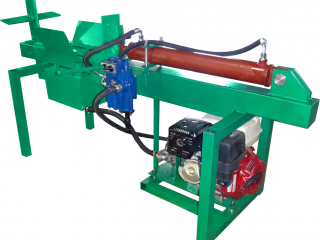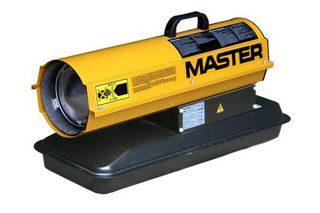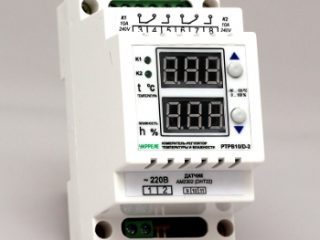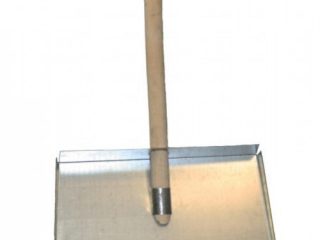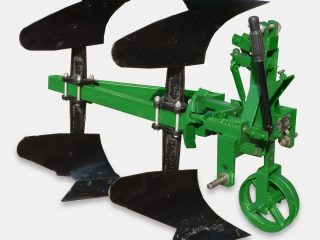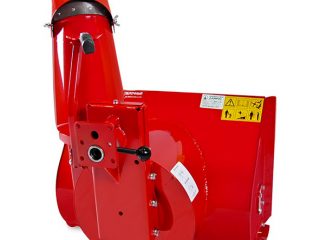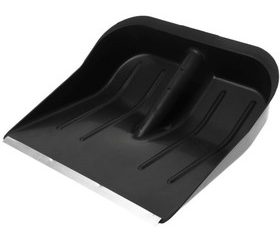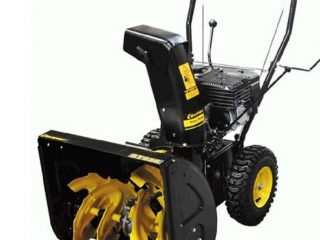Content
A beautiful, well-groomed lawn always makes anyone happy. However, the grass on the property will not look perfect if it is simply mowed. A lawn aerator helps to achieve good results, allowing you to turn any overgrown area into an ideal green area.
What is an aerator and how does it differ from a scarifier?
An aerator and scarifier are used to care for lawns. The second tool is also called a verticutter. Now let's try to figure out what is their difference.
An aerator is a kind of grass comb. In other words, the tool can be called a rake, only with special teeth. While combing the grass, they cut into the soil, leaving small grooves. Through these slots, the access of oxygen and moisture to the soil increases. The root system of plants begins to develop better and the grass on the lawn takes on a healthy appearance. Using an aerator, all debris is removed from the lawn, the grass is thinned, and large weeds.
Verticutter or scarifier does almost the same job as an aerator.The tool loosens the soil, collects small debris, cut grass, and moss. The function is almost the same, only the verticutter is more powerful.
When choosing between two tools, preference should be given to the aerator if the lawn soil is very soft. On heavily compacted soil it is better to use a scarifier. Many modern models are made using 2-in-1 technology. It is convenient to buy one tool, including an aerator and a scarifier. This combined device can work on any type of soil.
For example, let's take a common household tool. The working part of the forks is represented by durable long spokes. This is the simplest aerator. Now let's look at the rake. Some tool models have teeth made of triangular wedges. This rake is a simple hand scarifier.
Combination lawn scarifier aerator models have 2 replaceable shafts. You need a scarifier - they install a shaft with cutters, you need an aerator - they replace the working mechanism with a shaft with spokes.
Let's get acquainted with the types of scarifier aerators
With the increasing demand for lawn care tools, manufacturers have developed many models of scarifier aerators. They all differ in size, shape, and are designed to perform different volumes of work, but according to the type of use, they can be mechanical or with a motor.
Mechanical models
A mechanical scarifier aerator is often called a manual aerator.The use of the tool is justified for caring for a small home lawn of up to 2 acres. The advantage of the tool is its low cost, silent operation, and light weight. But, most importantly, a mechanical aerator does not require electricity or gasoline to operate, and this also saves money.
The only significant drawback of a mechanical scarifier aerator is rapid fatigue from its use. To thoroughly treat the lawn you will have to exert a lot of physical strength. The poor performance of the tool does not allow it to be used over large areas.
The most productive mechanical aerators and scarifiers are considered to be models made in the form of a small cart with wheels. As it moves across the lawn, the shaft with knives begins to rotate along with the wheels, making punctures and cutting small grooves in the ground. The size of the tool can vary greatly. The wider the shaft, the larger the lawn area can be processed in 1 pass.
Among the mechanical scarifier aerators, there is a separate group of primitive tools for hand and foot use:
- Hand tools are represented by rakes, but not all. Aerator rakes are characterized by thin teeth. There are models with triangular teeth, with each cutting element curved to the shape of a knife. Such a rake can be classified as a scarifier.
- A foot aerator is the simplest version of a hole punch. Two metal spikes are attached to the sole of the shoe. While trampling on the lawn, a man pierces the soil with his spikes.
Working with mechanical aerators and scarifiers is not easy, but buying expensive electric or gasoline models for a small area is unwise.
Models powered by electricity
The electric unit looks like an ordinary lawn mower. This scarifier aerator is used to care for lawns up to 15 acres.
It makes more sense to compare the electric model with its gasoline counterpart. The advantage of the unit is lower noise level during operation, efficiency, reasonable cost of the product, and lower weight.
The main disadvantage of electric scarifier aerators is their connection to the electrical network, low power of the electric motor, and small depth of soil cultivation.
The battery-powered machine is mobile. It is enough to charge the battery, and you can go to work on the lawn located far from home. However, battery-powered models also have their drawbacks. The main one is the limited operating time. A secondary disadvantage is the high cost relative to an aerator operating from an outlet.
Gasoline models
Gasoline models are considered the most productive among scarifier aerators. In terms of power, gasoline units greatly outperform their electric counterparts. They are characterized by a greater depth of penetration of the teeth into the soil. The machine is capable of processing lawns with an area of more than 15 acres. A gasoline scarifier is approximately 4 times more expensive than its electric counterpart. In any case, it is not advisable to buy it for your home. Such models are intended for service enterprises.
Criteria for choosing a scarifier aerator
You cannot select units based only on their type. There are a lot of design features and nuances that you should pay attention to:
- In electric and gasoline aerators engine power plays a huge role in productivity. How long the unit is capable of processing the territory without rest depends on the motor resource.
- The speed of aeration depends on the width of the working mechanism. The more the machine covers the strip of lawn, the fewer passes will have to be made, and, consequently, the processing time will be reduced.
- The plastic body of the machine is lightweight and does not rust, but with accidental impacts it can burst. Metal cases significantly increase the mass of the unit and are susceptible to corrosion, however, in terms of mechanical strength they are superior to plastic.
- Scarifier aerators can be with or without a grass catcher. Here you need to be guided by the volume and convenience of the work.
- Based on the type of knives, the models can only be scarifiers, aerators, or combined 2 in 1 units. It is, of course, more efficient to spend money on a combined unit.
These are all the main nuances that require attention when choosing a lawn care machine.
When to do scarification and aeration
The right time to scarify your lawn is mid-spring, around the beginning of April. It is possible to perform this procedure in late autumn. After scarification, bare areas of soil without vegetation may remain on the lawn. This does not mean that the scarifier is to blame. It’s just that in these places the grass could have disappeared due to the accumulation of water or the soil was dug up by cats or dogs. This problem can be solved by additional seeding of bare soil.
The best time for aeration is considered to be mid-May or the first ten days of September. The need for aeration is determined by the roots of the lawn grass. To do this, cut out a piece of turf with a knife and measure the depth of penetration of the roots into the soil with a ruler. If this figure is less than 50 mm, the lawn requires aeration.The choice of aeration time also depends on the type of grass. Some grow in the spring, and others in the fall. Aeration is necessary only during intensive plant growth.
As for working with the tool itself, you will first need to examine the lawn for the presence of stones and other hard objects. They can break or deform knives. If the unit is equipped with a grass catcher, remember to clean it after about 5 minutes. To make it easier to collect grass, use a garden cart. The contents of the grass catcher are shaken out into it.
The video shows lawn aeration:
Conclusion
As a result, it should be noted that using a scarifier aerator will not immediately improve the condition of a neglected lawn. Other additional measures will be required related to mowing, fertilizing and watering the grass. However, the process of aeration and scarification itself will improve the growth of vegetation.
